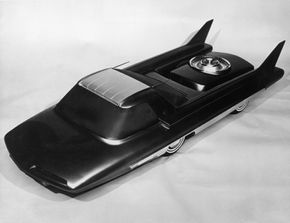In the 1950s, perhaps the height of the so-called Atomic Age, Ford developed a concept car called the Ford Nucleon. This nuclear-powered automobile was designed, according to Ford, based on the assumption that future nuclear reactors would be smaller, safer, lighter and more portable [Source: Ford]. The design called for a power capsule located in the rear of the car, charging stations replacing gas stations and 5,000 miles of driving before recharging or replacing the fuel. As is the case with many concept cars, Ford never built the Nucleon -- only a model car half the size of a normal car [Source: Ford].
Advertisement
It may seem like an impossible quest, or something from a science fiction movie, but nuclear-powered cars are worth considering, especially with the ongoing energy and climate crises. Given these challenges, some experts think that the use of nuclear power, in various forms, will make a comeback in the near future. When done properly, nuclear power is relatively safe, clean and affordable. So why not use it for cars?
To get an idea, think of how countries have employed nuclear reactors for uses beyond traditional nuclear power plants, submarines and aircraft carriers. Some uses of specialized reactors include providing heating in extremely cold climates and trying to convert coal into clean-burning gas. Both the former U.S.S.R. and the United States used small reactors to power satellites, though the practice became controversial because of satellites' propensity to fall back to Earth and break apart. These are examples of research reactors, and they may provide scientists with some ideas of how to adapt nuclear reactors for use in other vehicles.
One such possibility is nuclear-fueled hydrogen -- using nuclear energy to create clean, safe, affordable hydrogen fuel. Nuclear reactors could also power stations where motorists charge highly efficient batteries. Finally, scientists could create a miniature nuclear power plant and stick it in a car.
On the next page, we'll take a closer look at the benefits and explore some of the problems with a potential nuclear-powered car.
Advertisement



